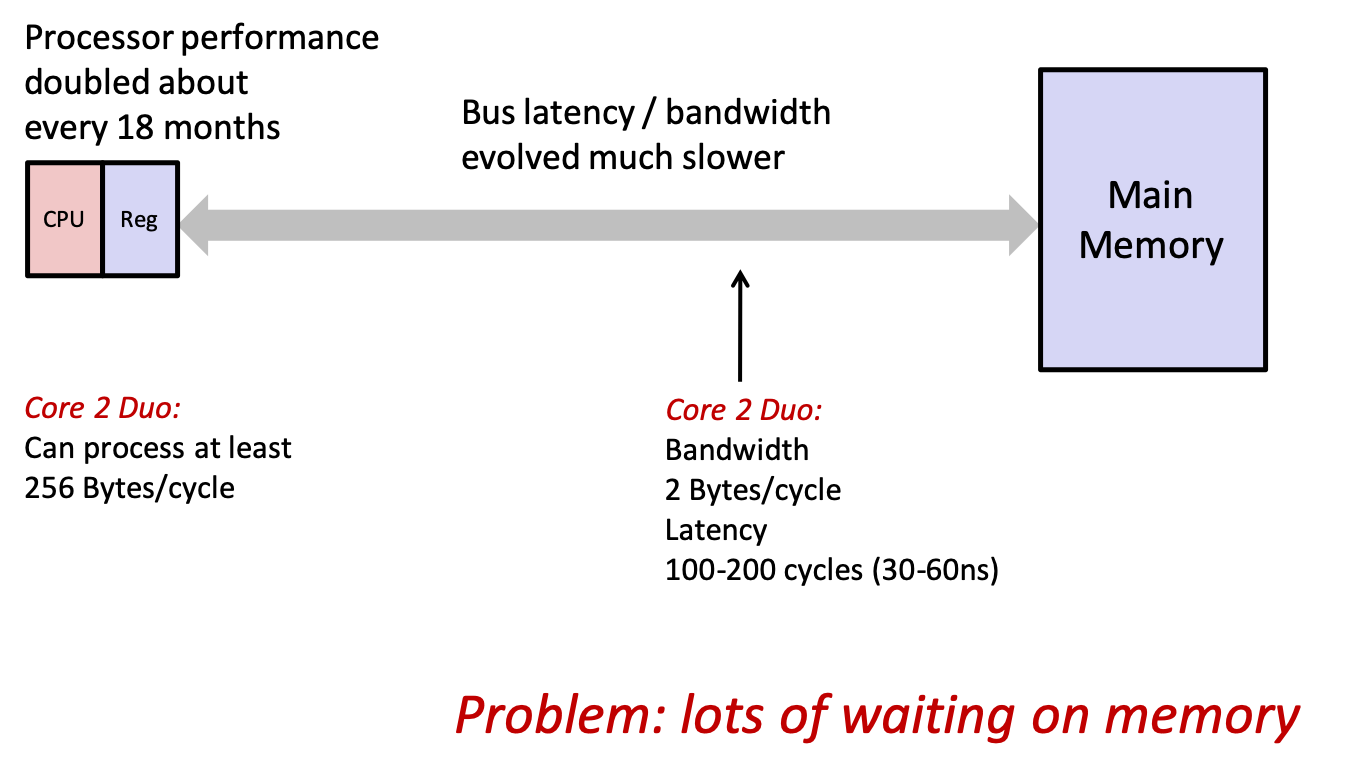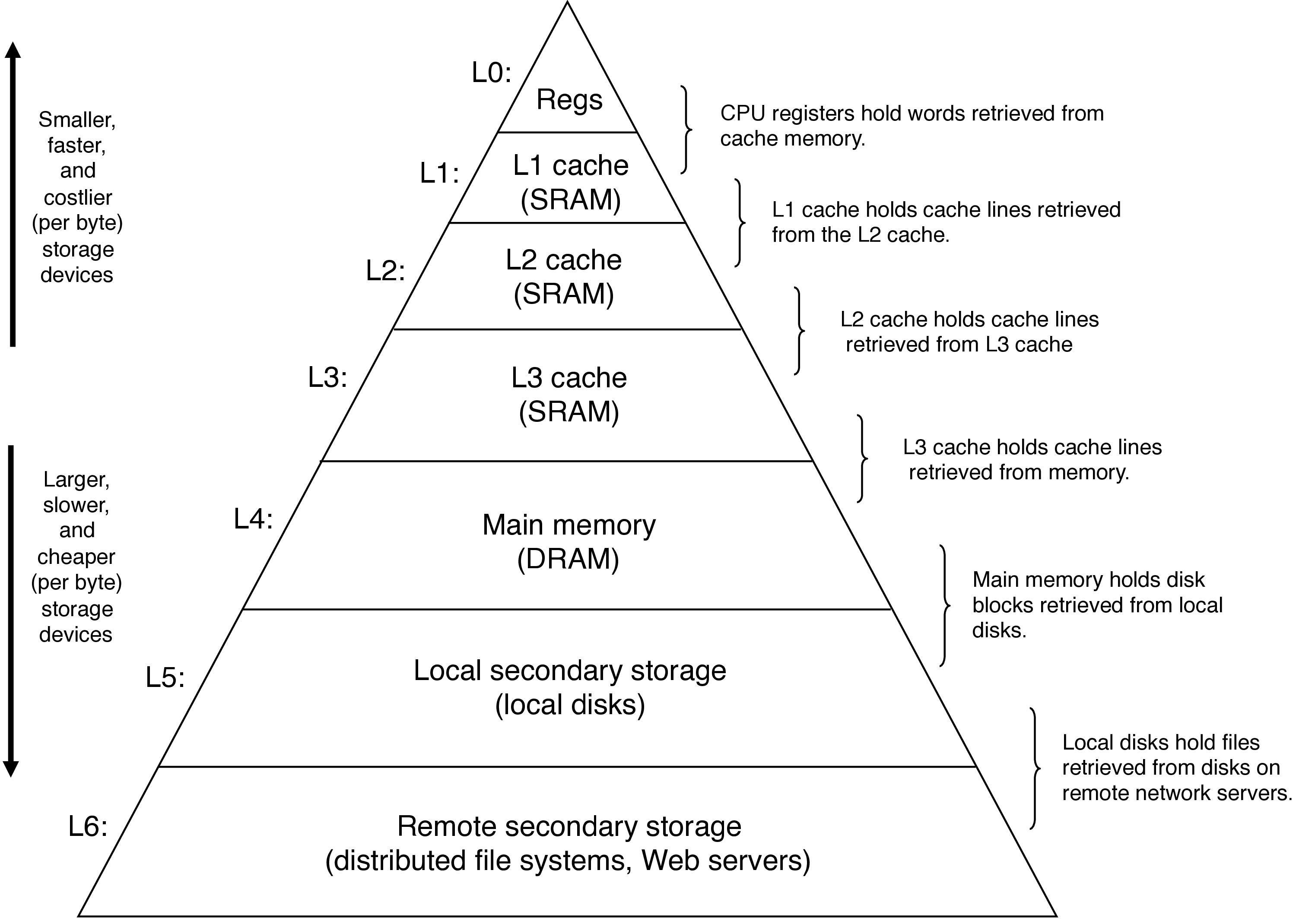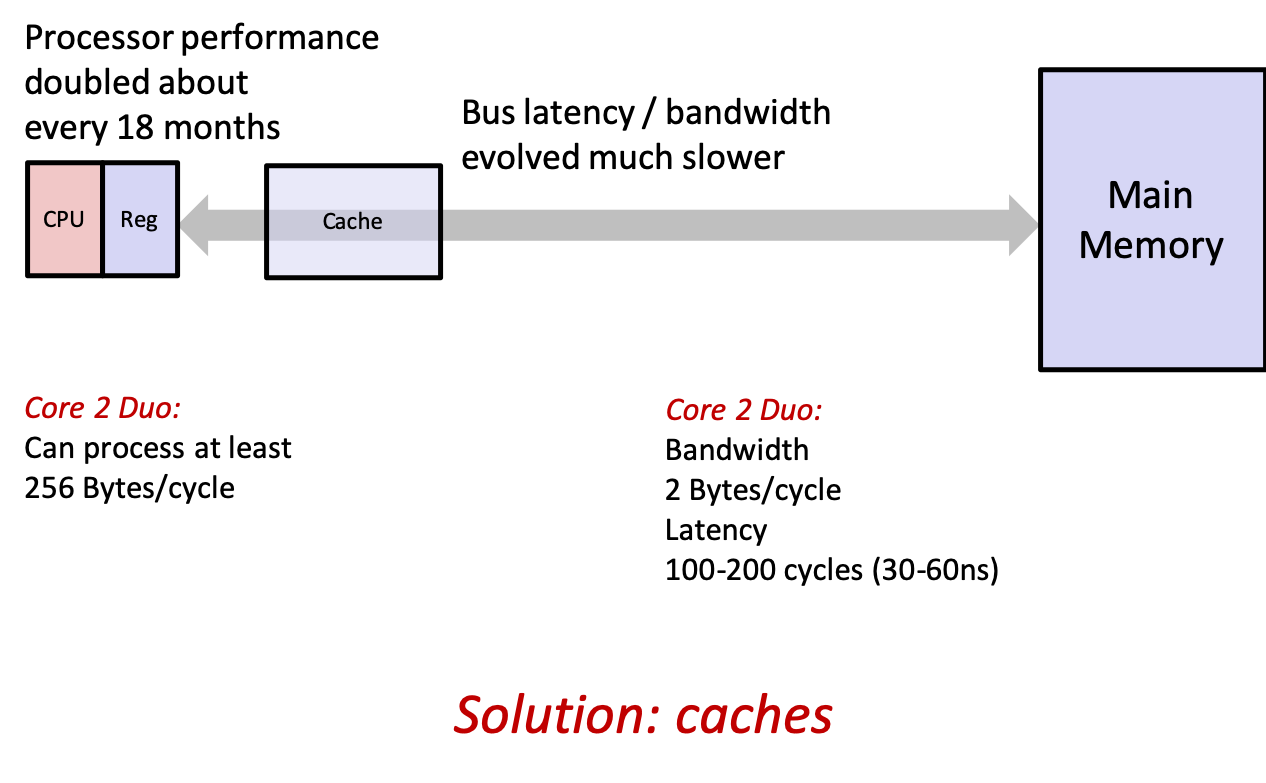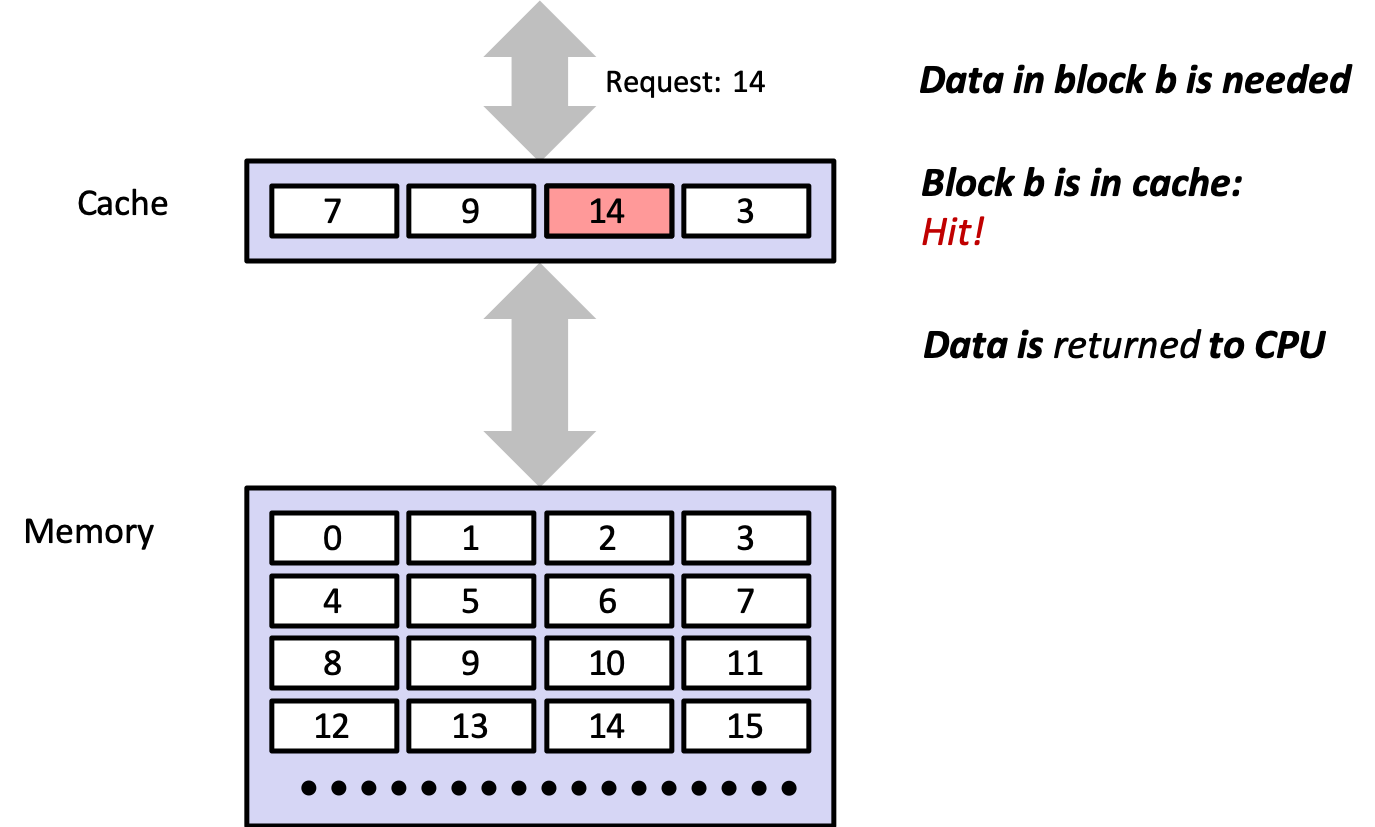CS 208 s20 — The Memory Hierarchy
Table of Contents
1 Video
Here is a video lecture for the material outlined below. It covers CSPP sections 6.1.1, 6.2, and 6.3 (p. 581–588, 604–614). It contains sections on
- introduction (0:03)
- processor-memory gap (0:38)
- problem: waiting for memory (3:40)
- program's view of memory (7:41)
- locality (9:46)
- memory hierarchy (15:12)
- SRAM vs DRAM (23:32)
- each level is a cache for the one below (29:14)
- basic example of caching (31:10)
- end notes (40:54)
The Panopto viewer has table of contents entries for these sections. Link to the Panopto viewer: https://carleton.hosted.panopto.com/Panopto/Pages/Viewer.aspx?id=f16a308c-7329-4a62-9ae6-abbf0123e1b3
2 CPU-Memory Bottleneck

- processor speed has increased at a much faster rate than memory speed
- this creates an increasing bottleneck when the CPU needs to access memory
- the CPU wastes time waiting around

3 Program's View of Memory
- from the program's perspective, there's
- registers
- memory
- disk
- (possibly) remote storage

- however, we will add different levels of memory to make accessing some data much faster
4 Locality
- first, the principle that enables adding new levels of memory to increase performance: locality
- essentially: referencing data that was recently referenced or that is nearby recently referenced data
- if we assume recently referenced data will be referenced again, it's worth it to do some extra work after the first reference to make future references much faster
- temporal locality: a referenced memory location is likely to be referenced again in the near future
- spatial locality: if a memory location is referenced, nearby locations are likely to be referenced in the near future
- in general, programs with good locality run faster, as all levels of the system are designed to exploit locality
- hardware cache memories, OS caching recently referenced chunks of virtual address space and disk blocks, web browsers caching recent documents
5 Caches!

- 0 cycles to access a register (16×8 bytes)
- 4–75 cycles to access a cache (~10 MB)
- 100s to access main memory (GBs)
- 10s of millions to access disk (TBs)

5.1 Aside: SRAM vs DRAM
5.1.1 Static RAM (SRAM)
- bistable memory cell, 6 transitors per bit
- stable in two states, any other state quickly moves into a stable one
- resiliant to disturbance
5.1.2 Dynamic RAM (DRAM)
- single transitor and capacitor per cell, can be very dense
- sensitive to disturbance
- drains on a timescale of 10 to 100 ms, must be refreshed (read and re-written)
- error-correcting codes (extra bits associated with each word) can also be used
5.2 Basic Idea

5.2.1 Cache Hit

5.2.2 Cache Miss

6 Homework
- CSPP practice problems 6.8 (p. 609)
- The week 6 quiz is due 9pm Wednesday, May 20
- Make a post in the lab 3 check-in forum, due 9pm Monday, May 18